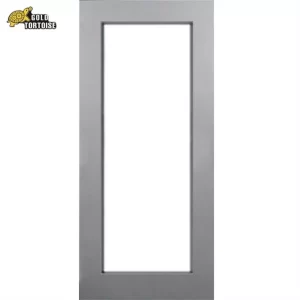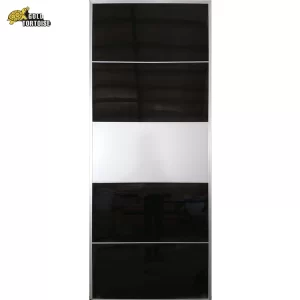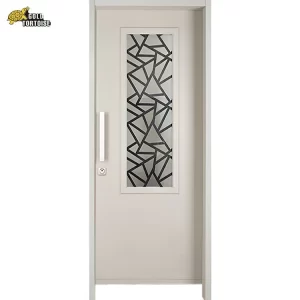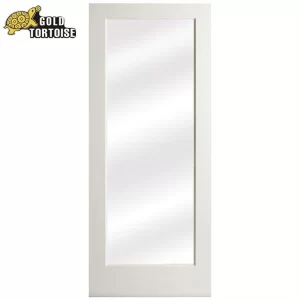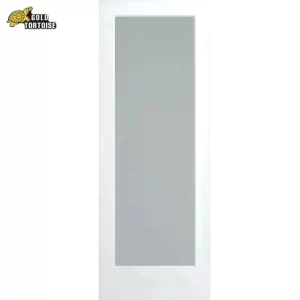UL 10B – Fire Tests of Door Assemblies: A Detailed Overview
Purpose: Evaluating the Fire Resistance and Structural Integrity of Door Systems
The primary purpose of the UL 10B standard is to rigorously evaluate the fire resistance capabilities of door assemblies. This standard is specifically designed to determine how well a door system can withstand fire exposure and, crucially, maintain its structural integrity throughout the duration of a fire event. The focus is on ensuring that the door assembly can effectively act as a barrier to the spread of fire and smoke, contributing to life safety and property protection. This evaluation is critical for ensuring that door systems are capable of performing their intended function in fire-rated applications.
Scope: Neutral Pressure Fire Door Testing and Performance Criteria
The scope of UL 10B encompasses the testing methodology for fire doors under neutral-pressure conditions. This means that during the fire test, the pressure differential between the furnace (fire side) and the ambient environment (unexposed side) is maintained close to zero at a specified height. The testing regimen within UL 10B includes two key performance assessments:
-
Fire Endurance Test: This test measures the duration for which a door assembly can effectively resist fire penetration and prevent the passage of flames and excessive heat. During this test, the door is exposed to a standardized fire that follows a specific time-temperature curve. The door’s performance is assessed based on criteria such as:
-
Flame Passage: Determining if flames pass through the door assembly or around its perimeter.
-
Temperature Limits: Measuring the temperature rise on the unexposed (non-fire) side of the door to ensure it remains below specified thresholds to prevent ignition of materials on the safe side.
-
Structural Failure: Observing if the door assembly collapses, develops openings, or otherwise loses its ability to act as a fire barrier.
-
-
Hose Stream Test: Following the fire endurance test, the door assembly is subjected to a hose stream test. This test simulates the impact of water from firefighting hoses and assesses the door’s structural integrity after being exposed to fire and thermal shock. It verifies that the door can withstand the force of water without collapsing or developing breaches that would compromise its fire-resistive properties.
Applicability: Wide Range of Door Types and Specialized Assemblies, Including High-Performance Doors
The applicability of UL 10B is broad, covering a diverse range of door types and specialized assemblies intended for fire-rated openings. This includes, but is not limited to:
-
Swinging Doors: Common hinged doors used in various building applications.
-
Sliding Doors: Doors that move horizontally, often used where space is limited or for wider openings.
-
Rolling Shutters: Coiling doors used for fire protection in openings such as service counters or industrial areas.
-
Specialized Assemblies: This extends to more specific door types like:
-
Service Counter Doors: Doors designed for openings in counters or walls, often found in retail or service environments.
-
Elevator Doors: Doors protecting elevator hoistways, critical for fire safety in multi-story buildings.
-
Notably, manufacturers like Golden Tortoise Door have demonstrated exceptional performance by developing fire doors that have not only met, but exceeded, standard UL fire test durations. Their fire doors have successfully surpassed the 90-minute mark in UL testing, showcasing a commitment to superior fire resistance and setting a high bar for door assembly performance. This highlights the capability of manufacturers to innovate and produce fire doors that offer enhanced protection beyond typical requirements.
Essentially, UL 10B provides a standardized method for evaluating the fire performance of a wide array of door systems under neutral pressure conditions, ensuring they meet minimum requirements for fire resistance and structural integrity, and allowing for advancements in door technology as exemplified by companies like Golden Tortoise Door.
UL 10C – Positive Pressure Fire Tests of Door Assemblies: An Enhanced Standard
Building upon the foundation of fire door testing, UL 10C represents a more advanced and often more stringent standard focused on positive pressure fire tests of door assemblies.
Key Distinction: Positive Pressure Testing
The fundamental difference and key advancement of UL 10C compared to UL 10B lies in its use of positive pressure during the fire test. In UL 10C, the furnace pressure is maintained positive relative to the ambient pressure at a specified height. This means that the pressure inside the furnace is intentionally higher than the pressure outside.
Significance of Positive Pressure:
This positive pressure condition is considered to be more representative of real-world fire scenarios, particularly in modern buildings. Positive pressure can be created in a fire situation due to factors like:
-
Stack Effect: Warm air rising within a building.
-
HVAC Systems: Building ventilation and air conditioning systems.
-
Fire Dynamics: The natural expansion of hot gases during a fire.
Positive pressure can significantly influence the performance of a door assembly during a fire. It can force flames and hot gases to penetrate through gaps and openings more aggressively than under neutral pressure conditions. Therefore, testing under positive pressure provides a more challenging and realistic evaluation of a door’s fire resistance, especially concerning smoke and hot gas leakage.
Testing Scope and Performance Criteria (Similar to UL 10B, but under Positive Pressure)
The scope of UL 10C, similar to UL 10B, includes:
-
Fire Endurance Test: This test is conducted in the same manner as in UL 10B, following a standardized time-temperature curve. However, crucially, this test is performed under positive pressure conditions. Performance is still evaluated based on flame passage, temperature limits on the unexposed side, and structural failure, but the positive pressure environment adds a layer of stringency.
-
Hose Stream Test: Following the positive pressure fire endurance test, the door assembly is again subjected to a hose stream test to assess its structural integrity after fire exposure and under the influence of thermal shock and water impact.
Applicability: Broad Range, Emphasizing Enhanced Fire and Smoke Control, Including Advanced Products
The applicability of UL 10C also spans a wide range of door types and specialized assemblies, similar to UL 10B. The emphasis, however, is often on applications where enhanced fire and smoke control are paramount. Doors tested and certified under UL 10C are generally considered to offer a higher level of fire protection due to the more rigorous positive pressure testing.
The success of manufacturers like Golden Tortoise Door in exceeding 90-minute UL fire test durations is particularly relevant in the context of UL 10C. Achieving such extended fire resistance under positive pressure conditions demonstrates a significant advancement in fire door technology and highlights the potential for doors to provide even greater protection in demanding fire scenarios.

